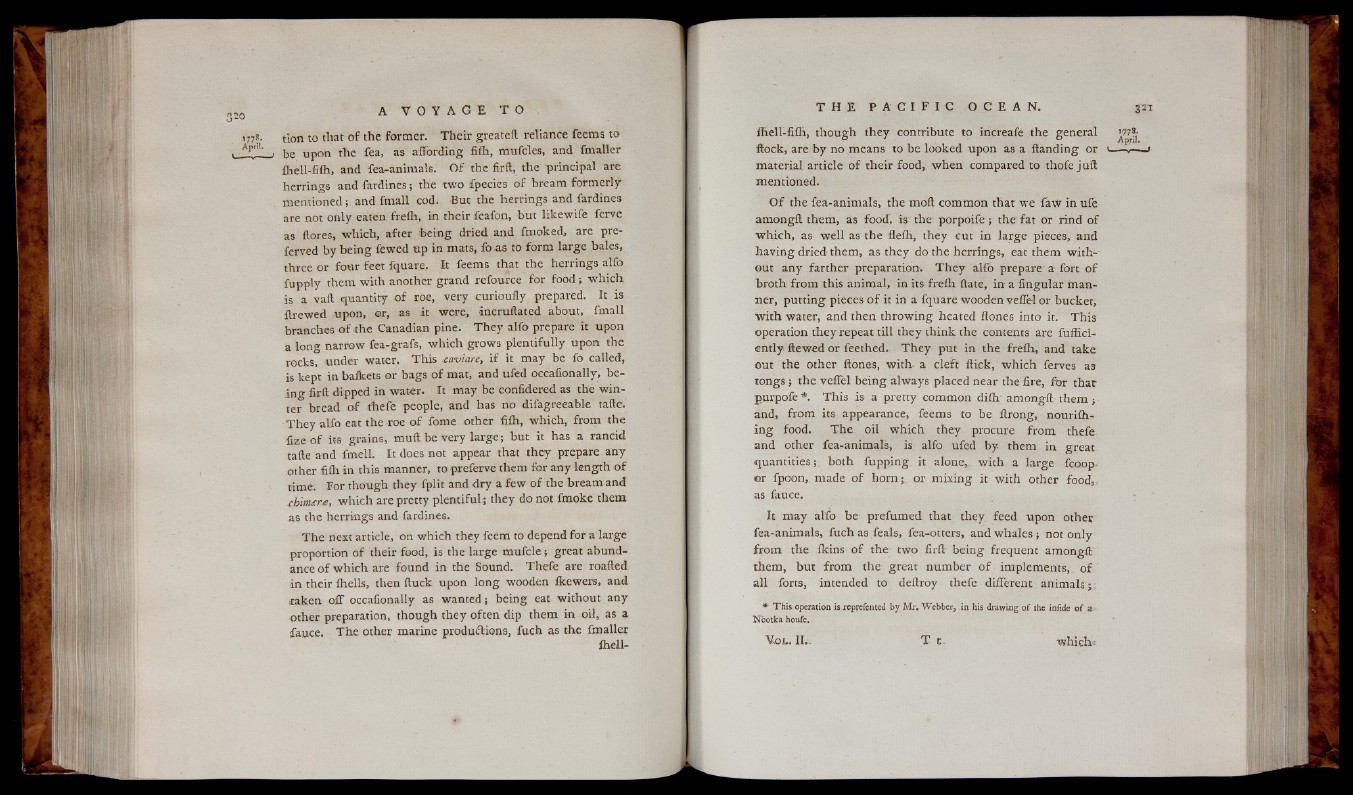
tion to that o f the former. T h e ir greateft reliance feems to
be upon the fea, as affording fiih, mufcles, and fmaller
ihell-filh, and fea-animals. O f the firft, the principal are
herrings and fardines; the two fpecies o f bream formerly
mentioned; and fmall cod. But the herrings and fardines
are not only eaten freih, in their feafon, but likewife ferve
as ftores, which, after b e in g dried and fmoked, are pre-
ferved b y be in g fewed up in mats, fo a s to form large bales,
three or four feet fquare, It feems that the herrings alfo
fupply them with another grand refource fo r food ; w hich
is a vaft quantity o f roe, ve ry curioufly prepared. It is
ftrewed upon, ©r, as it were, incruftated about, fmall
branches o f th e Canadian pine. T h e y alfo prepare it upon
a long narrow fea-grafs, which grows p len tifu lly upon the
rocks, unde r water. This -caviare, i f it may be fo called,
is kept in bafcets or bags o f mat, and ufed occafionally, bein
g firft dipped in water. It may be confidered as the w in ter
bread o f thefe people, and has no difagreeable tafte.
T h e y alfo eat the roe o f feme other fiih, which, from the
fize o f its grains, muft be ve ry la rg e ; but it has a rancid
tafte and fmelL It does not appear that they prepare any
other fiih in this manner, to preferve them for any length o f
time. For though they fplit and d r y a few o f the bream and
chimtcre, w hich are p retty p len tifu l; they do not fmoke them
as the herrings and fardines.
T h e next article, on w hich they feem to depend for a large
proportion o f their food, is the la rge m u fc le ; great abundance
o f w hich are found in the Sound. The fe are roafted
in their fliells, then ftuck upon long wooden ikewers, and
taken o ff occafionally as wanted ; be in g eat without any
other preparation, though they often dip them in oil, as a
fauce. T he other marine productions, fu ch as the fmaller
ihellihell
fiih, though they contribute to increafe the general
flock, are by no means to be looked upon as a ftanding or
material article o f their food, w hen compared to thofe ju ft
mentioned.
O f the fea-animals, the mod common that we faw in ufe
amongft them, as food’, is the p o rp o ife ; the fat or rind o f
w h ich , as w e ll as the fleih, they cut in la rge pieces, and
ha vin g dried them, as they do the herrings, eat them without
any farther preparation. T h e y alfb prepare a fort o f
broth from this animal, in its fre ih ftate, in a Angular manner,
p utting pieces o f it in a fquare wooden veffel or bucket,
w ith water, and then throwing heated ftones into it. T his
operation they repeat till they think the contents are fuffici-
en tly ftewed or feethed. T h e y put in the freih, and take
out the other ftones, with, a d e f t ftic-k, w hich ferves as
tongs ; the veffel being always placed near the fire, fbr that
gurpofe *. T his is a pretty common diih amongft th em ;
and, from its appearance, feems to be ftrong, nouriih-
in g food. T h e oil which they, procure from thefe
and other fea-animals, is alfo ufed by them in great
quantities;, both fupping it alone,, w ith a large fco.op-
or fpoon, made o f horn; or mixing it with other food,,
as fauce.
It may alfo be prefumed that they feed upon other
fea-animals, fu c h a s fe a ls , fea-otters, and w h a le s ; not only
from the ikins o f the two firft being frequent amongft'
them, but from the great number o f implements, o f
all forts, intended to deftroy thefe different animals
1778.
April.
* This operation is reprefented by Mr. Webber, .in his drawing of the infide o f a-
Nootka houle..